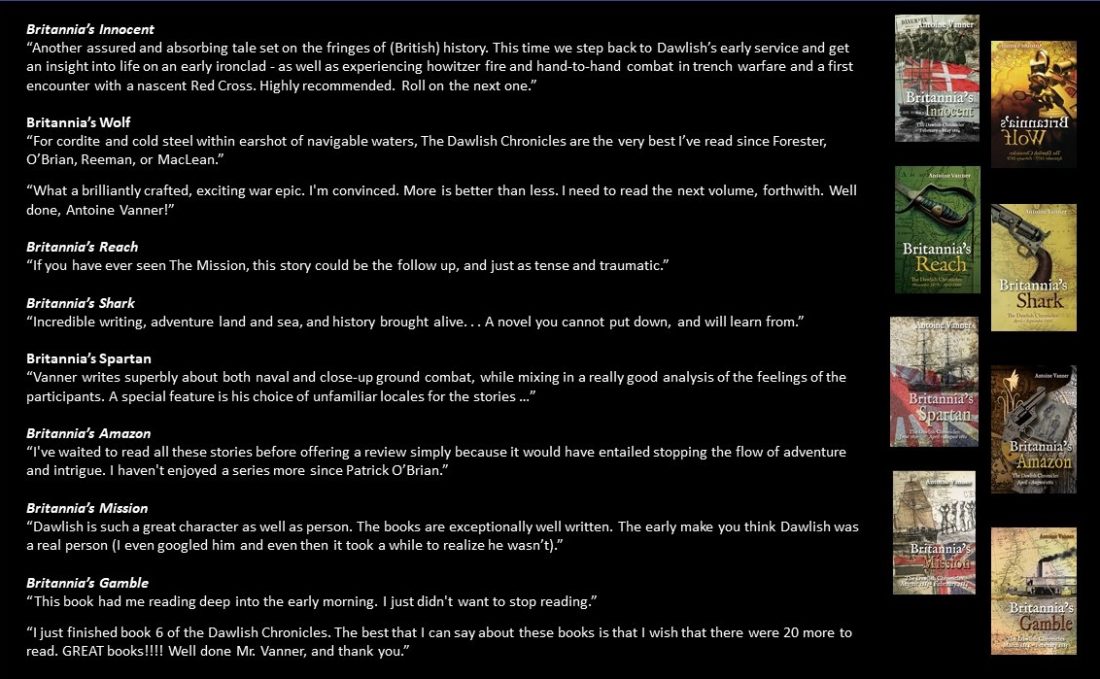1916 Illustrated – a German Perspective

1916 was to be a momentous year in WW1, notable for the battles of Verdun, the Somme and Jutland, of the siege of Kut, of the Brusilov Offensive and of the smashing of Rumania, I found it interesting to see how it was viewed from a German perspective. This was through an illustrated part-work that was published regularly through the conflict, and re-issued in bound copies. (See also an earlier article “WW1, a German View – the Last Years of Cavalry.” Click here if you missed it.). There are many drawings, and not a few photographs, in this work, but they are printed in the text and the quality is poor. One suspects that paper-quality, and perhaps availability, was already starting to bite under wartime conditions. It’s interesting to note the equal prominence given on the cover to the German (L) and Austro-Hungarian (R) eagles, symbols of empires that would both disappear in less than two years
What is most striking from these illustrations is how alien, how remote that world seems. It is admittedly over a hundred years ago, but WW2 is three quarters of that time away and yet the feeling of remoteness is nothing like so strong. The “feel” of WW2 has some familiarity for us – a world of radar and radio, of aircraft carriers, of armoured forces, of strategic bombing, of air transport, of the arrival of the jet engine, of penicillin, of the Manhattan Project, all developments that have their lineal descendants today. But the WW1 era feels so radically different – to a large extent more a hangover of the 19th Century than the start of the 20th that it’s hard to believe that a mere 25 years separated 1914. with its horsed cavalry, its strutting rulers and generals in operetta-style uniforms, its horse-drawn transport, its infantry tactics that were essentially Napoleonic, its infantry walking over vast distances, its wood and linen aircraft, from a later war in which technology would be the deciding factor. Some of the illustrations below provide examples:
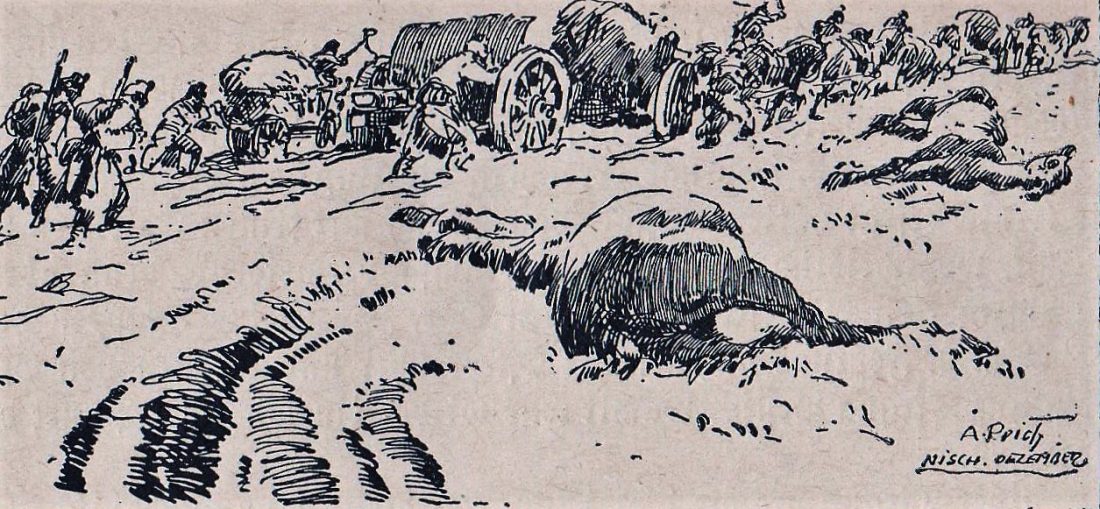 Austro-Hungarian forces advancing in the Balkans –
Austro-Hungarian forces advancing in the Balkans –
a scene reminiscent of Napoleon’s retreat from Moscow
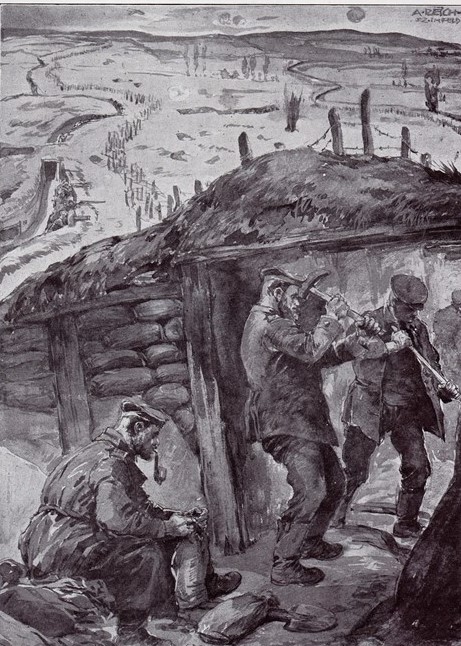 Constructing a dug-out – a scene drawn from imagination rather than reality.
Constructing a dug-out – a scene drawn from imagination rather than reality.
The overall “feel” is 19th Century however – it could be an illustration for Zola’s Germinal
 A Turkish ambulance – it would not be out of place in the American Civil War five decades before
A Turkish ambulance – it would not be out of place in the American Civil War five decades before
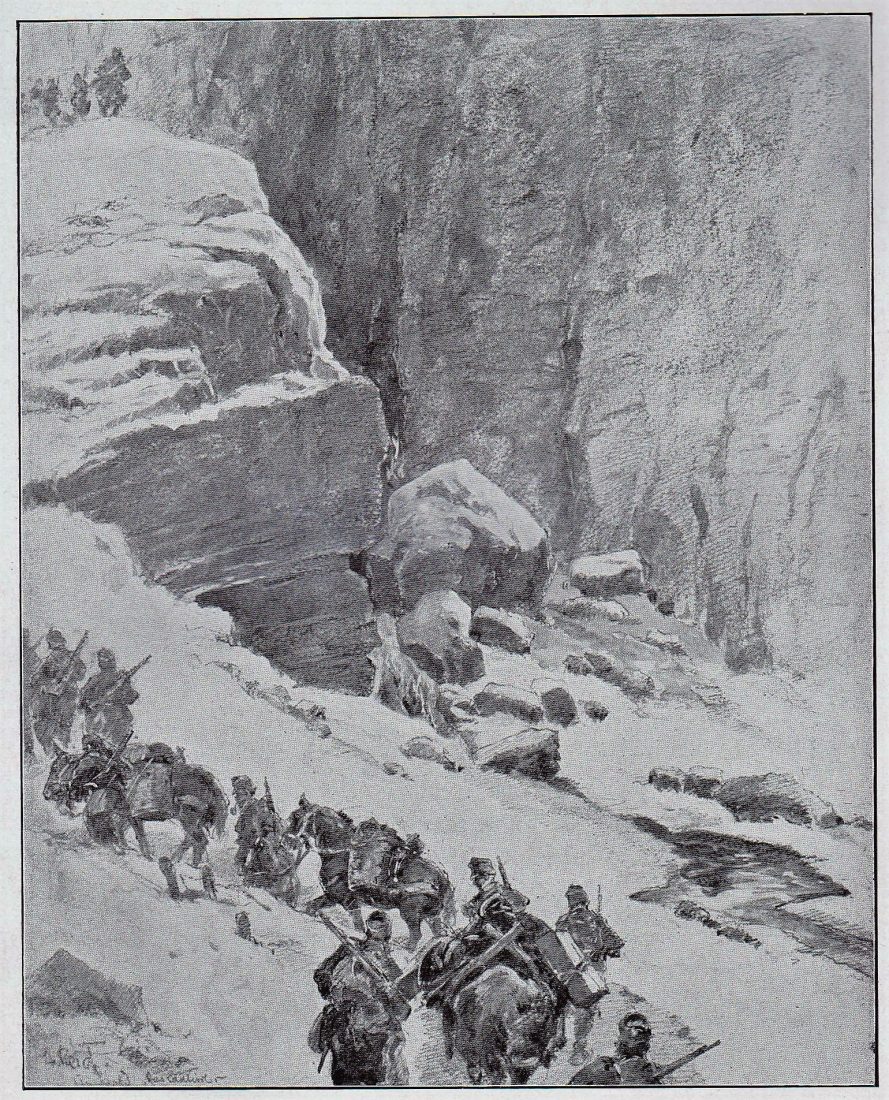 Austro-Hungarian troops advancing against Italy in the Dolomites
Austro-Hungarian troops advancing against Italy in the Dolomites
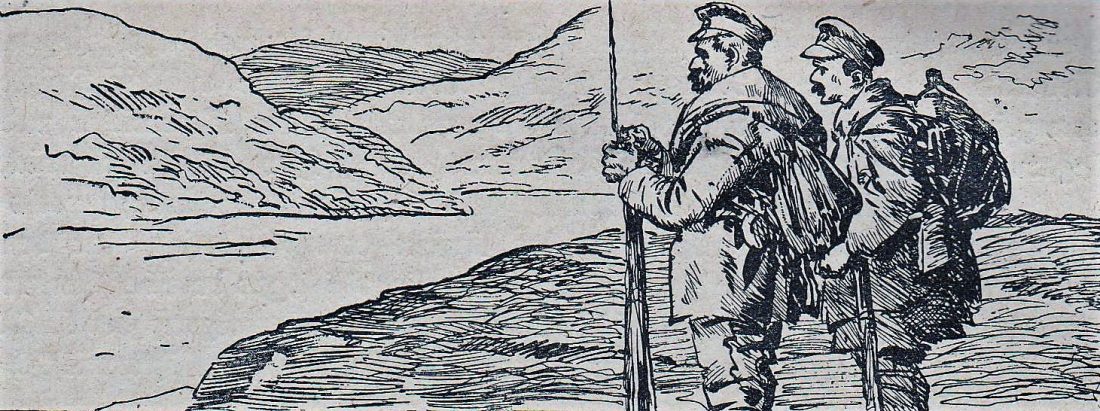 Russian Infantry
Russian Infantry
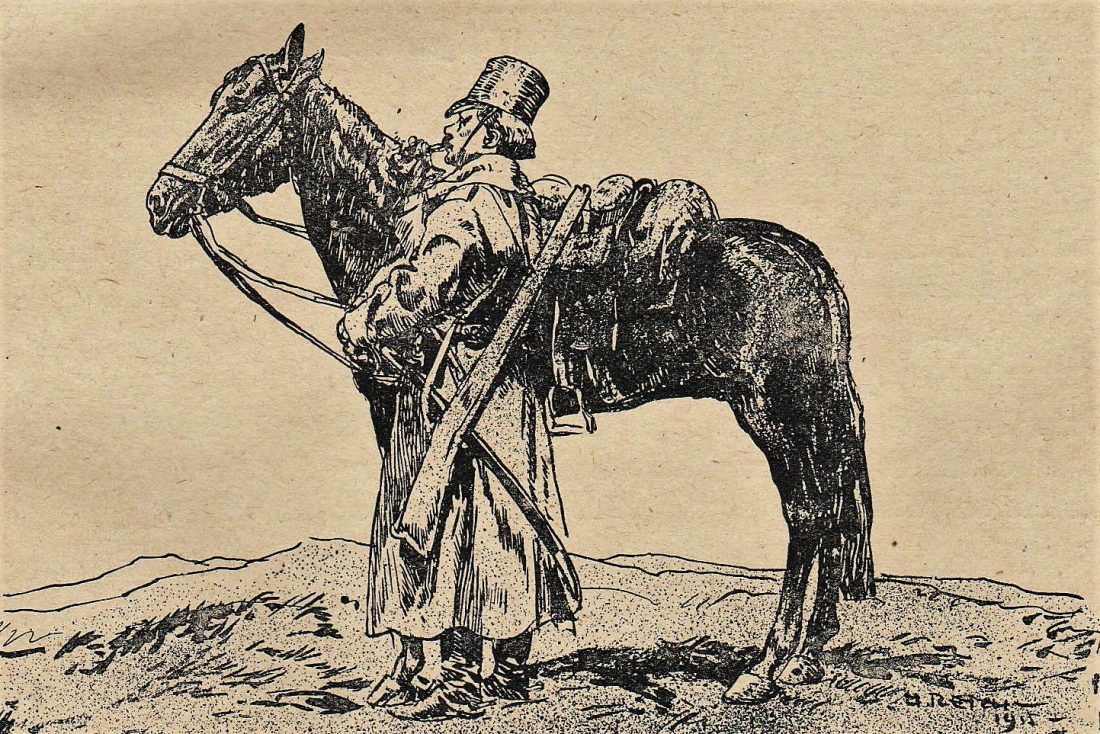 Russian Cavalry – in what’s virtually Napoleonic uniform
Russian Cavalry – in what’s virtually Napoleonic uniform
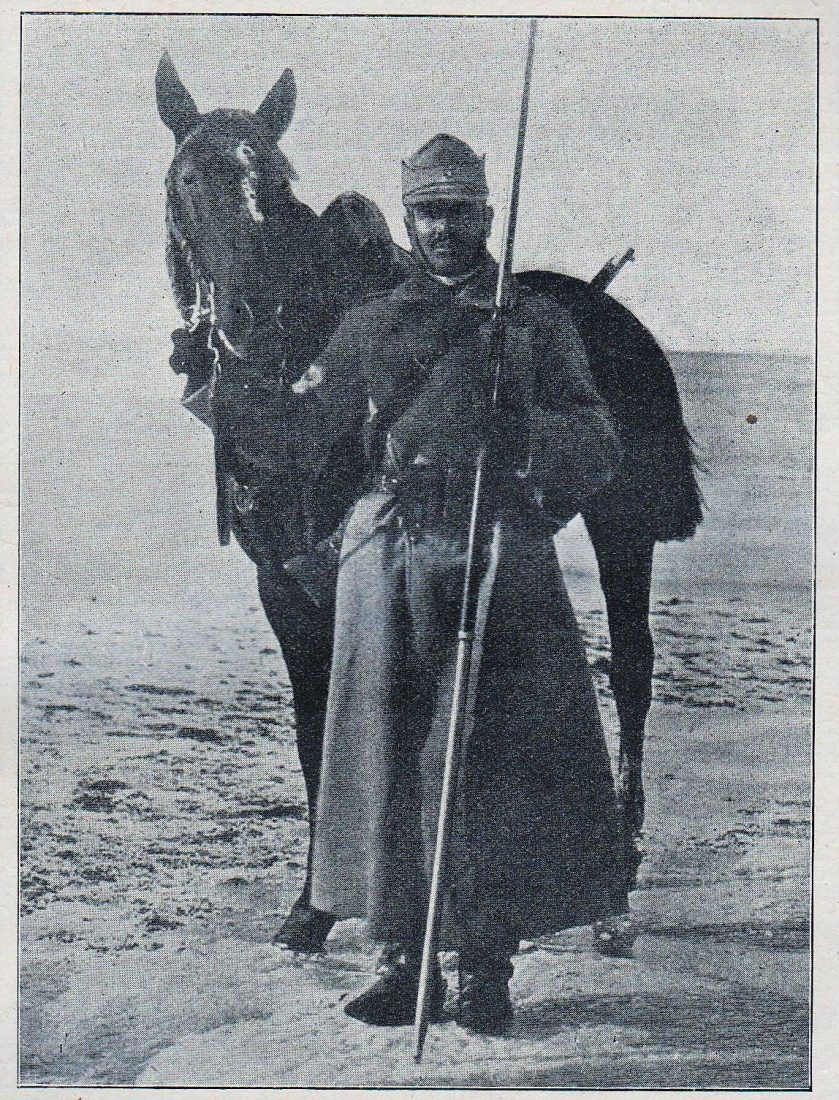 Romanian cavalry trooper – note his lance. His son could be trapped and facing tanks,
Romanian cavalry trooper – note his lance. His son could be trapped and facing tanks,
and praying for air-supply, a quarter-century later in the mechanized hell of Stalingrad
 An over-optimistic view of what Zeppelins were achieving against enemy naval bases
An over-optimistic view of what Zeppelins were achieving against enemy naval bases
 Death in 1916 of A-H Emperor Franz-Josef – reigning since 1848!
Death in 1916 of A-H Emperor Franz-Josef – reigning since 1848!
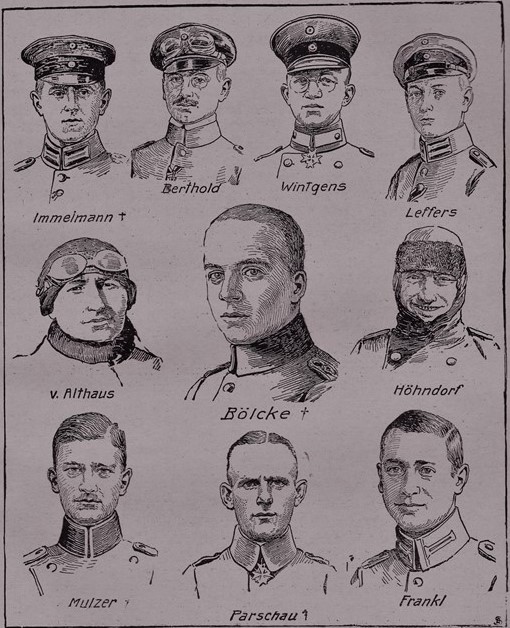 The air-war was getting serious. Aces here of 1916 –
The air-war was getting serious. Aces here of 1916 –
and those marked with a cross were already dead by the time of publication
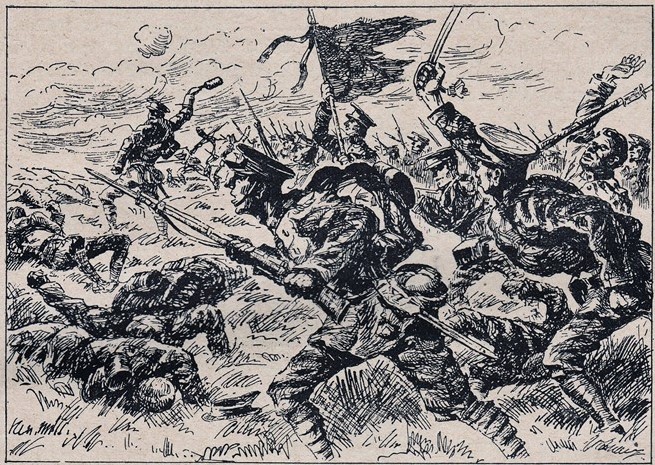 The British attack at the Somme presented – generously – in heroic terms
The British attack at the Somme presented – generously – in heroic terms
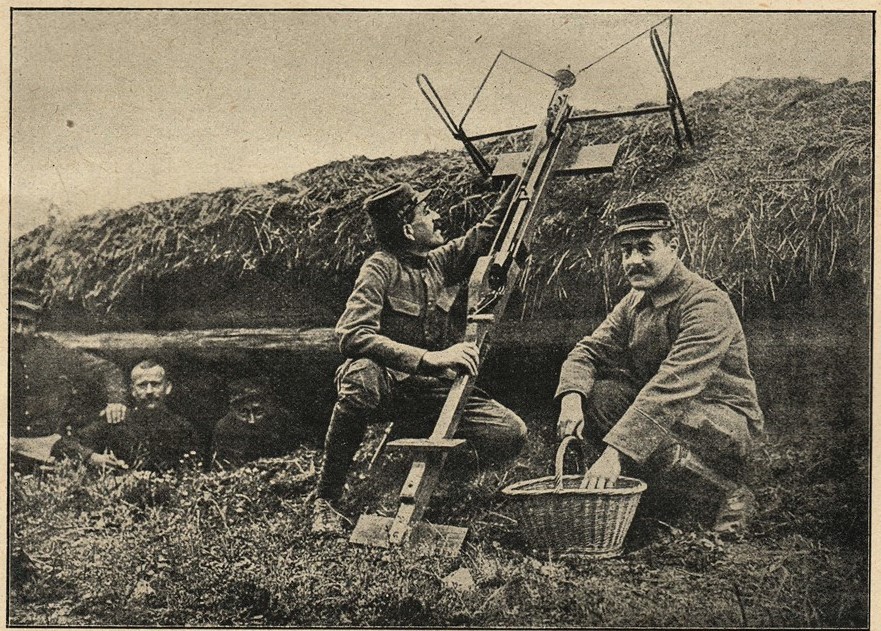 French grenade thrower – uncertain whether it’s a crossbow or some even more
French grenade thrower – uncertain whether it’s a crossbow or some even more
complicated contraption. Note shopping-basket for transporting grenades.
 And a view of the German and British maneuvers at the Battle of Jutland
And a view of the German and British maneuvers at the Battle of Jutland


